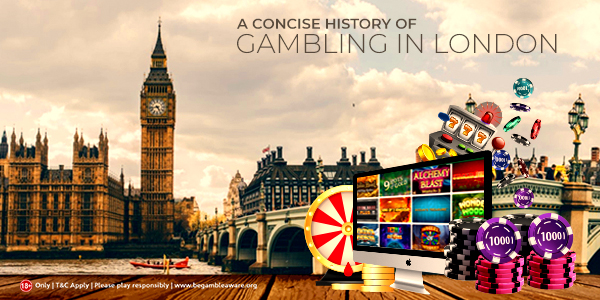The Strange Background of Gambling World in London

There are too many things that London is famous for. From being the seat of the ancient colonizers who began ruling the world, to all the medieval statues laying out the deepest treasures of the land, London has it all!
And the list becomes endless if you start pinpointing all of the aspects this world-city brews to add to its fame. But there’s one element which we’re sure you didn’t pay heed to at first. And that’s gambling. The history of gambling in London isn’t that of mere entertainment, but a tale of tragedy and painful memories.
Writers like Charles Dickens had many of their characters pass through the terrible ordeal of gambling. It even penetrated the room of King Henry VIII as well as the gangster brothers Jack Spot and Kray Twins. Don’t worry; we’ll cover them one by one and tell you all about how all these characters are linked.
The 16th Century: Let’s Start with the King
Well, King Henry was an addicted gambler, and he lacked in his administration capabilities because of that. Moreover, when things started getting out of hand, and his military strength started to falter, he banned the gambler games altogether within his generals and administration. Although, he resumed playing it.
The 17th Century: When Things Got a Bit More Organised
You may have passed over the famous Thomas Neale Street, but do you know who Thomas Neale is? Well, he used to be a gambling groom for James II, William III, and Charles II. Or it would be better to say that Neale ensured that the kings’ table was always filled with dice, cards, and some people who are willing to lose their dough.
In 1684, Charles, the second, granted some more powers to this man and called upon him to raize all the illegal gambling dens. Thomas Neale had a major influence on the life of a 17th-century gambler, and in 1870, King Street was renamed Thomas Neale Street in his honour.
The 18th Century: the Widening Gap in Society
Gambling became quite a big deal in the 1700s when it caused the wide disparity between the rich and the poor, a constant reality not just in London, but the entire country. What came out of this ever-widening gap was the fluidity and permanence of slums.
It was a very common sight those days in London that a young brat suddenly won a lot of money, found himself a good job and left the slum for good. What was equally commonplace was a rich man losing all his money in a single night and replacing that empty slum with his sad, unlucky soul! So, it was a vicious loop that made the game one of the greatest vices of 18th century London.
This made the gambling dens to be called hells, while those slums which did illegal gambling, were called ‘lower hells’.
The way Dickens saw London
By the time Dickens entered the scene, gambling had become a lot more organised. In 1828, the Duke of Wellington sponsored William Crockford to make a casino. He did and named it after himself. Crockford is London’s oldest casino.
In 1841, Charles Dickens wrote ‘The Old Curiosity Shop’ which led his readers into the world of gambling and introduced his own views on the subject. ‘The Old Curiosity Shop’ is the story of a girl called Nell and her grandfather who struggle so hard to make ends meet through their shop. So, to put the little girl out of her misery, her grandfather takes to gambling and in turn, lands up with terrible debt.
Rattled by this immense debt and hounded by the evil debtor, they run to the Midlands. But Nell, in the end, dies due to exhaustion of the journey, making the novel one of the most heart-rending Victorian stories of all times.
The Famous Story of Gangland Gambling
By the 20th century, gambling had become almost equal to the two famous twins, the Kray Brothers. In the 1950s, Ronnie and Reggie Kray owned a part of a popular casino called Esmeraldo Barn, located in the posh area of Knightsbridge. They made an immense amount of money from gambling which helped them gain a foothold in the industry.
After Reggie was jailed, Ronnie started making his way slowly into the business dealings of the entire web of casinos across London, which was a big cause of worry among businessmen.
He went on to become quite famous, so much so that he even dined at the House of Lords.
After Legalization in the 60s
When gambling became legal in the 60s, pubs started taking in fruit machines, betting on skill-based games such as bridge was as common as dirt, and people were on a wild goose chase.
The Clermont Club, which attracted people like Roger Moore, Peter Sellers, and Princess Margaret, was the first one to get its license.
But this golden period was short-lived as very heavy regulations were imposed by the end of the decade. And by the 1970s, the total number of gambling casinos in London saw a sharp dip in numbers from 1000 to 120.
EndNote
So, you now know the rich history of gambling and how it determined people’s lives at one point in time. The detailed account of Mell’s lives is proof of what came to pass for people who belonged to the lower rungs of society. And for the rich, gambling has always been about more and more money.
Review Summary
Review Name: The Strange Background of Gambling World in London
Posted On: 02/05/2020
Author: Emma Denton





